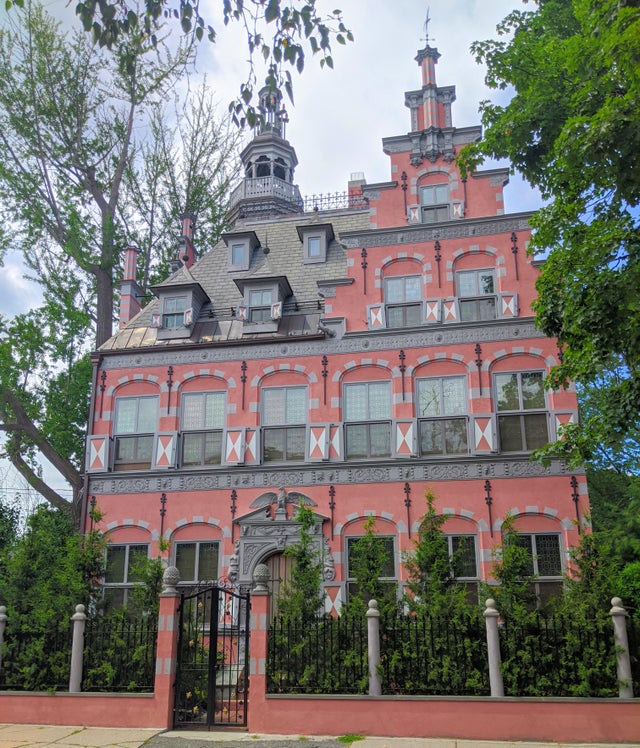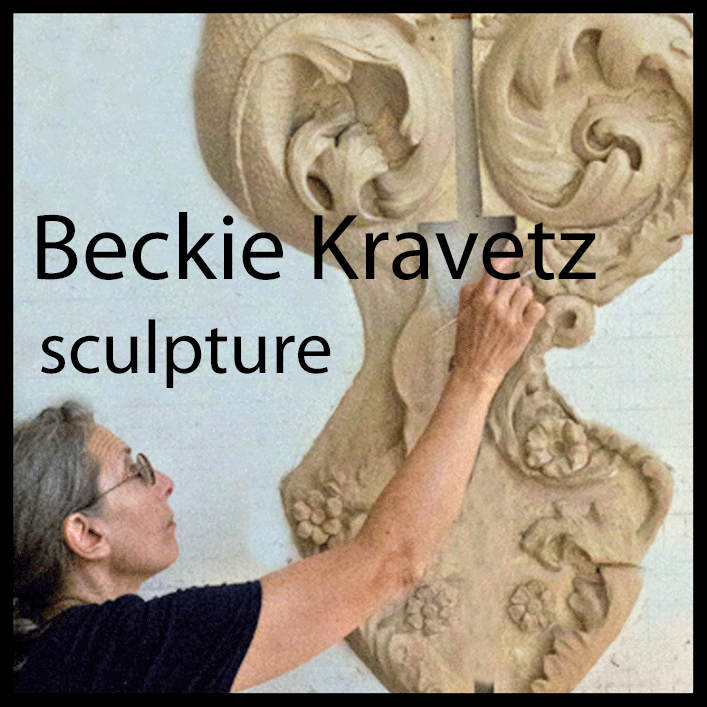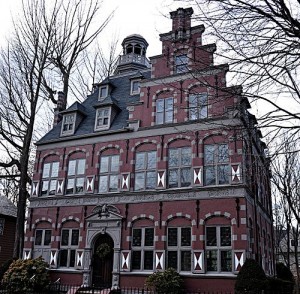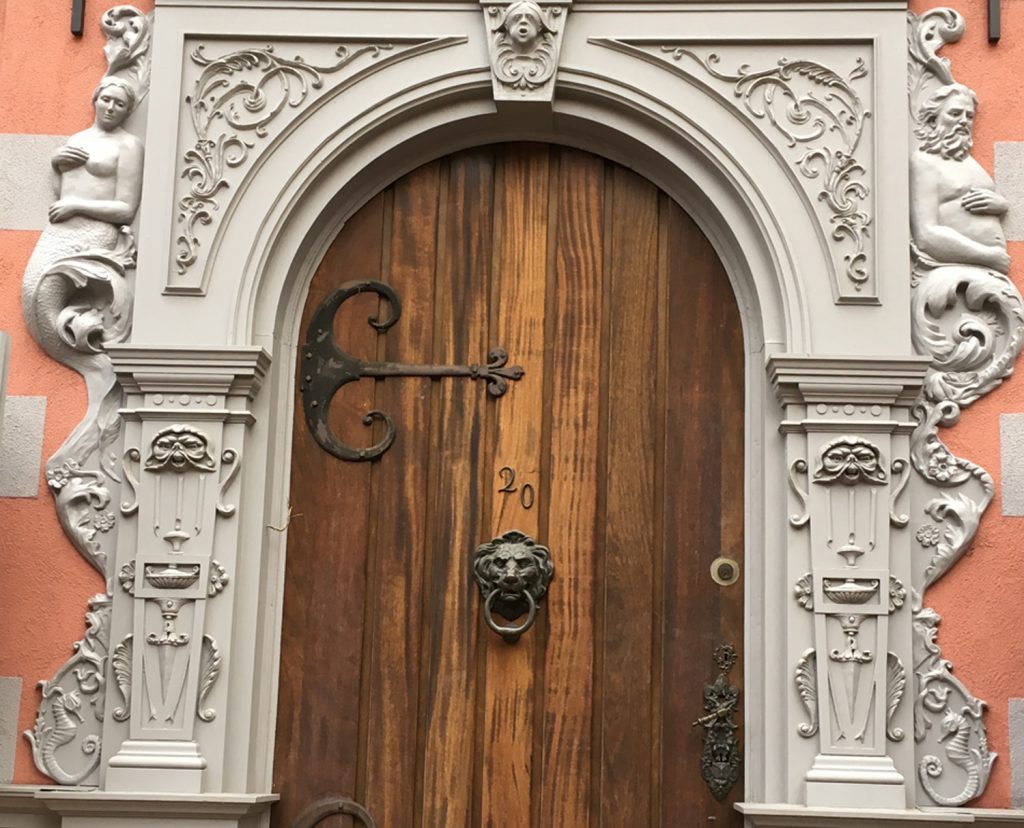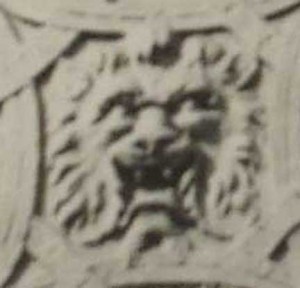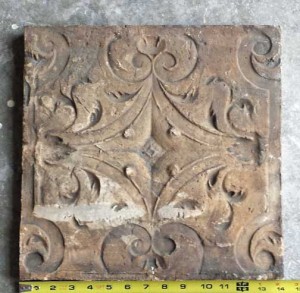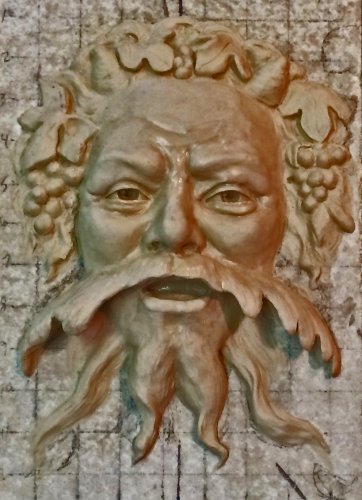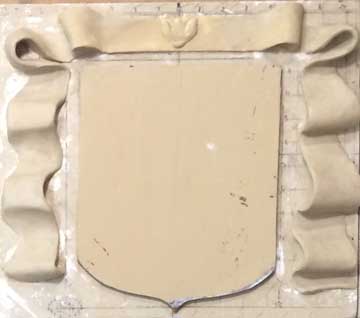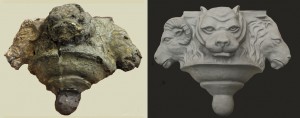Architectural Restoration
Beckie was commissioned to recreate sculptural elements for the facade of the historic Dutch House in Brookline, MA.
The Dutch House was originally built in 1893 for the World’s Columbian Exposition (Chicago World’s Fair) by the Van Houten Cocoa Company of the Netherlands, as a display pavilion and cocoa house. It was located at one end of the Manufactures and Liberal Arts Building. (As the main exhibit space of the fair, this was the largest building ever constructed at the time. The house, pictured above, is circled in the photo below, which gives an idea of how huge the main building was!)
 While attending the Fair, Captain Charles Brooks Appleton of Brookline, MA was so taken with the Cocoa Pavilion that he purchased it, had it dismantled and shipped to Massachusetts, and then reconstructed at its present location. Inspired by the Franeker Town Hall (c. 1591) in Friesland, Netherlands, the Dutch House is one of the best examples of the Dutch High Renaissance architecture in the United States. The house was placed on the National Register of Historic Places in 1986.
While attending the Fair, Captain Charles Brooks Appleton of Brookline, MA was so taken with the Cocoa Pavilion that he purchased it, had it dismantled and shipped to Massachusetts, and then reconstructed at its present location. Inspired by the Franeker Town Hall (c. 1591) in Friesland, Netherlands, the Dutch House is one of the best examples of the Dutch High Renaissance architecture in the United States. The house was placed on the National Register of Historic Places in 1986.
After more than a century of changing hands and serving a variety of commercial and residential uses, the Dutch House was purchased by a private party in 2011 and is undergoing extensive renovation to restore it to its original glory. The friezes that once encircled the exterior were destroyed in a previous renovation. In 2014, Beckie was commissioned to recreate the friezes from a photograph of the original, and to reconstruct a corbel cap from an existing fragment. In 2016, she was asked to sculpt the outer edges of an elaborate doorframe, which was being reconstructed from an original watercolor sketch. The panels Beckie created are those on the right and left sides of the door frame. The final castings were done in Forton MG (a reinforced gypsum cement). Molds and casting were beautifully executed by Joey Pesce of Pygmalion Elements & Sculpture.
For additional historical information on the house, see this page.
For some fascinating information about the place of chocolate at the Colombian Exposition, see this page.
Additional images of both phases of Beckie’s work on the Dutch House are in the gallery below:
Click on the thumbnail to see an enlarged image. Use the bottom right-hand arrows to advance to the next image. Click again on the enlargement to return to the full page.
The following photos show elements of the work in progress:
Here are photos of the original frieze panels, and the damaged negative mold for the second story decorative panel.
The corbel was reconstructed from the original, badly damaged plaster fragment shown on the left. The right-hand image is of Beckie’s work, sculpted in plasticine clay directly on top of the original fragment. A rubber mold was made on the clay sculpture, from which multiple copies were cast in fiberglass-reinforced cement. The corbels were installed on the first and top stories of the house.
The door frame was based on the watercolor sketch posted above. Beckie created the outer edge elements, as shown in this photo:
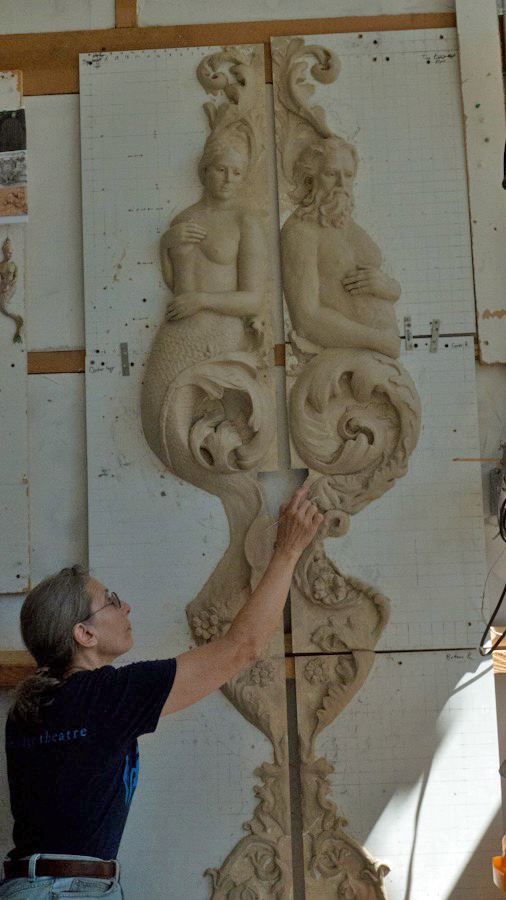
photo by Jeff Jacobson

